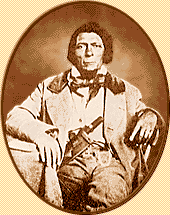March is Women's History Month, and today I'm taking a look at musical prodigy Dr. Joyce Brown, Broadway's first African-American female musical conductor. I'd never heard of Dr. Brown, but was introduced to her by my Goodreads friend Damon Evans. Thak you, Damon! The following is an excerpt from ESPN.com:[The musical production that Dr. Brown conducted beginning on its opening night] was "Purlie," which debuted in 1970, and explored the life of traveling preacher Purlie Victorious Judson set in the Jim Crow era. The play was nominated for Tony's Best Musical award that year. This was quite the feat for Brown, as conducting was and remains a highly male-dominated profession.
When asked how she felt about making history with "Purlie," Brown -- who played piano, violin, cello, trumpet, saxophone and organ -- told the International Musician Magazine in 1970, "I would have gotten the job anyhow because the competency is there." She also declared in the New York Daily News in '70: "I'm a member of [the American Federation of Musicians] Local 802 [Union] in good standing. I've worked hard. And I'm reliable. I was picked for the job."
Purlie's pit orchestra was racial diverse -- simply because the New York City-raised daughter of Jamaican immigrants was bold enough to ask for it. As she told the International Musician: "I requested an interracial orchestra -- and a congenial one. And, I got it," but acknowledged that this was "not as usual."
"To see the black people in the pit [at all] was a big deal," highly acclaimed Broadway conductor and Joyce Brown protege Linda Twine said.
Simply being a black woman waving the baton was not the only reason audiences were so enthralled by her. She moved with the effervescent spirit of a well-rehearsed one-woman show.
The New York Daily News wrote in 1973 that Brown "manages so much body English when she leads that the audience can't help being aware of her." Three years earlier, that same publication, under the headline "Joyful Joyce," stated that she "sings all the lyrics along with the actors and does refined bumps and grinds as she leads the band. Her pearl earrings do not bounce off only because her ears are pierced."
For the complete article, click here. It's a shame she seems to be forgotten. Thanks for visiting and have a great week!




